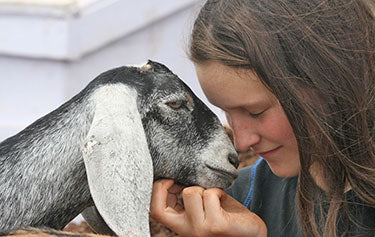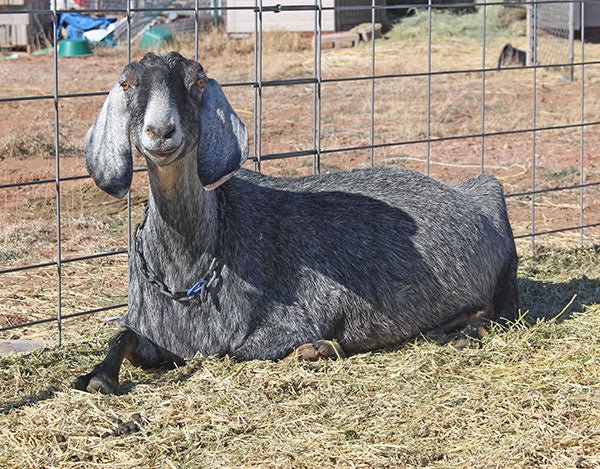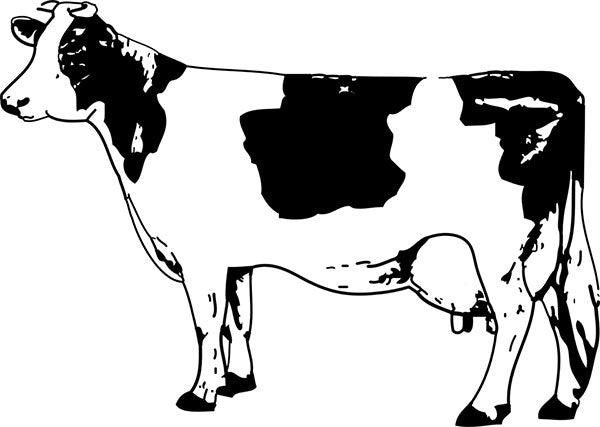
Robin in early Spring, 2018
This post came from a discussion I had with Wendy Woodward at Witch Hazel Dairy in Snowflake, Arizona after our recent interview (click here). Wendy and her family had been caring for an elderly goat (Robin) during the course of our email conversations (for a month or so) and Robin died shortly after the interview was posted. For Robin’s life story (until 2018) and pictures of her – click here.
I’m hoping that after reading this discussion, some of you will weigh in about the subject (in the comments section).
(Note: After this post was published, the BBC did an article about a retirement home for animals (including goats) located in Belgium – https://www.bbc.com/news/in-pictures-45142801.)

Wendy’s daughter, Hazel and Robin at 4 months
A Conversation About Aging Goats
Me: I’m sorry for your loss (of Robin). At least you know you gave her the best care possible.
Wendy: THAT GOAT WAS SO SPOILED. Because this last couple weeks, she has been struggling to get up, we were visiting her a couple times a day to see if she needed help, and we’d bring her cookies or fruit. She was getting AM fruit and PM fruit chopped up and hand-fed to her, and soaked beets in the evening.
I had scattered water buckets all over her usual ‘path,’ so the place was lousy with drinking opportunities. She had a buffet of goodies to pick from and when it became apparent that going up the single step into the hay barn proper was difficult, we started propping hay up all over inside the more accessible yard where she hangs out.

Early summer 2017 after her last kidding – right before she was dried off and retired
We have a daily checklist (Hazel loves lists with boxes to check off) and we had ‘Visit Robin’ for everyone, and ‘Feed Robin AM fruit’ and ‘Feed Robin PM Fruit’ and ‘Robin shot’ for her daily pain injection, and ‘Brush Robin,’ though toward the end she didn’t seem to want to be brushed anymore – another hint that her nervous system was going haywire. (Two days ago, she ‘lost’ her water bucket in a line of four buckets clipped to the fence, and she started making ‘bad’ decisions, like staying laying out in a sandstorm, EVEN when we were trying to get her to move).
But, I hate the part where they have to die, especially since she still called to us every time we came out and would try to hobble over to hang out with us. Hazel was staying out there to read to her or recite poetry, daily, toward the end. My grandson Jacob is here right now and he’d bring her grapes or apples or carrots, too.
There’s always things you could do better or different, but you have to do the best you can, with what you have. Unfortunately, death is not painless… recent studies are suggesting that the brain has activity for a significant time after the heart stops, so you just kind of have to do what you have to do and try to take the long view: A sudden death that might be briefly painful in trade for long, drawn out suffering. I guess I’d choose the former. But, anyway.

Robin in 2016 when she was 6
Me: This may sound weird, but why doesn’t someone open an “old goat’s home” where people can send their elderly goats if they can’t go to the extraordinary lengths you went to? The advantage for the goats would be that they would be around other goats their age, they would be in a safe environment and they would have 24 hour care so that when they are ready to die, they could be given pain killers at the end. Their owners would be able to visit them any time.
When my brothers and I were young, our dog, Rip, died and my parents thought we were too young to understand the concept of death, so they told us he had gone to an old dog’s home for all the reasons I mentioned above. They made it sound wonderful, so we were happy for our dog. It wasn’t until we were in our forties, talking about Rip that we looked at each other and realized at the same time that there are no “old dog’s homes.”
Wendy: I read your email to my family this morning and it engendered an interesting discussion.
While we all like the idea, I’m not sure that it would work for a number of reasons.
First, in the ‘real world,’ goats are ‘working animals;’ they are bred for milk or meat. They do their job and when they can no longer do their job, and they are no longer cost-effective, they are dispatched (Nubians are considered a ‘dual purpose’ breed and can be eaten). Very few farmers keep pet livestock for the obvious reason that they would drive themselves nuts if they kept falling in love with animals whose deaths would continue the farmer’s livelihood.

Robin with April and Santra in late summer, 2016
Second, very few people keep goats strictly as pets. I have NEVER heard of anyone else who is even remotely successful ‘house training’ a goat (except one man who said he’d house trained a Golden Guernsey dairy goat, but the goat was still very young and I have not heard any more about that since). AND I HAVE LOOKED for such information.
There is a gal who runs a goat rescue back east somewhere, and it’s her full-time job. She takes very messed up goats (Presto would have been a candidate, but I did not offer him to her), and she rehabilitates them with an army of volunteers and a lot of donated money. She has a Facebook page for her organization and probably a number of vets who do volunteer work.
After I watched some of her videos, I noticed that all the goats in her house were in diapers and very young. When I messaged her and asked if she had successfully house trained a goat, she told me that goats could NOT be house trained; it was impossible.
THUS, most folks don’t consider goats in the venue of pets that they’d go through any length to send them off gracefully. One of our friends puts the goats down when they start to decline because it is tough to be on the down-hill side when you are a herd animal and have to fight for your status; suddenly you can’t access the best food, and shade. Our vet told us, when we saw this happening to Robin, that the ‘herd was culling Robin.’ Our other friends, I think, retire theirs toward the end and put the goats down when they really have become feeble.

Sarah in 2016 or 2017. Not pregnant.
BUT, the main thing, I think, which would work against this idea is that, again, goats are herd animals, and goat owners do tend to accumulate goats. So, goats end up with their own ‘buddy,’ and ‘best friend.’ We really take buddies seriously, after an incident we had a few years ago. We gave Vera Bennett a five year old goat Sarah, and Sarah’s two daughters. Even though we bottle-raise the babies semi-separately from the dams, we do ‘baby visits’ and Sarah knew her girls, so we figured that’d be a nice little starter herd for Vera.
When we got Sarah over there, Vera bent over backwards to lavish love and attention on Sarah and her girls. The babies were perfectly happy and settled in. Sarah, who is affectionately referred to as an ‘easy keeper,’ and about whom people ALWAYS ask, ‘Is she pregnant?,’ stopped eating and started dropping weight. The only time she’d eat is when Vera would sit out with her and talk to her.
Vera runs a pediatric office, however, and is away from home 10-12 hours a day, so her sitting in her field with Sarah wasn’t going to do it. Then Sarah, who has ALWAYS been super easy to milk, and ready to do her job, started refusing to get on the milk stand. She’s a big heavy girl and picking her up is not an option. IT was all kinds of drama.

Whimsey in 2016
Finally, we had Vera come over and try to milk Whimsy, a younger LaMancha doe who can be notoriously difficult to milk. Vera was able to milk Whimsy, and so we traded Whimsy for Sarah.
Vera felt like a failure at goat owning, but I told her that it wasn’t HER, it was Sarah. Our friend Kathryn verified this. She said she had to take back a couple older goats who she had tried to ‘retire’ out to other families and despite those families’ best efforts, the does went into what must have been a depression – the same symptoms that Sarah had. Kathryn has only seen success if she was able to transfer TWO buddies (she knows who her goats’ friends are too) to the new home.
Goats, being herd animals, want to be with THEIR friends, not other new friends. Robin was getting really beat up in our herd (the vet said that the herd was ‘culling’ her). So, we pulled her out of the doe pen to have free range in our main yard. For the first few days, even though Robin could SEE the herd, she was very unhappy she couldn’t get in there (and get beat up??!). We thought about taking Athena, our other older goat out, and putting her with Robin, but decided that this would only stress out two goats instead of one, and Robin was SO THIN at that point, that I didn’t want to be overfeeding Athena to get weight on Robin. So, Robin adjusted over the course of a couple weeks, to being separate.
Interestingly, we also have Presto out a couple times a day (the little jerk ate all but two of my FIRST APPLES EVER on my Golden Delicious tree, yesterday – Update, he got them all!) and Robin wanted nothing to do with Presto (not HER friend). She would threaten him and fortunately he didn’t know enough to realize she could barely stand up and she was all talk and no action; he stayed away from her. We did LOTS of Robin-visits, added fresh fruit treats and all kinds of goodies, to Robin’s life to try to make up for her lack of her buddies. Robin could SEE her friends, but couldn’t BE there (and be beat up).
So, short answer, THOUGH we love the idea of a place where older goats could retire and be cared for by people who could gentle their ailments, we don’t think that the old goats would be happy if they were moved away from their friends to an Old Goats Home. It wouldn’t work with their psychological makeup.

April in June, 2018. 2 years old
And at least, we comfort ourselves knowing Robin’s legacy continues. We have kept her daughter April and may be keeping Summer if Summer doesn’t sell soon. Robin’s other granddaughter, Autumn went to her new home last month, and Robin’s grandson Bolt was just claimed by another local family as their new herd-sire.

Summer in 2018. 3 months old

Bolt, 2018. 3 months old














































































































































